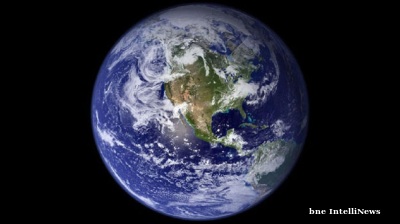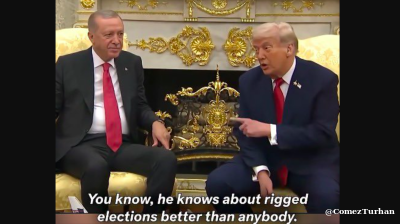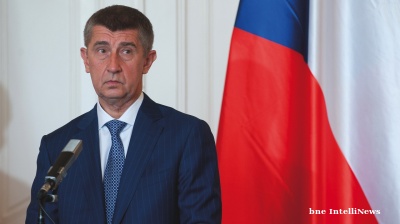President Donald Trump’s tariff salvo aimed at some of the BRICS economies is in danger badly of backfiring on US interests by driving the more moderate members of the world’s leading emerging economies into the anti-Western Sino-Russian alliance.
The US president’s Liberation Day assault on all of America’s main trading partners has prompted the BRICS to circle their wagons and present a united front in the face of US protectionism, when previously there was little true unity amongst them.
“But divisions between the members will ultimately limit how far political and economic ties are able to develop,” said Shilan Shah, Deputy Chief Emerging Markets Economist at Capital Economics.
“If permanent, the Trump Administration’s levy of an additional 25% tariff on Indian goods for its purchases of Russian oil would take its effective tariff rate to 36%, one of the steepest among major economies,” he noted.
Brazil also faces a punitive 50% tariff that is clearly politically motivated as last year the US actually ran a small trade surplus with Brazil. Trump’s decision was made, “not for economic reasons but political ones – namely disputes over the trial of former president Jair Bolsonaro and ‘attacks’ on US tech companies.”
South Africa faces a high tariff too, which, while “not as explicitly political, may partly reflect tensions with the US over land reform,” says Shah.
“Trump’s aggravation of these three BRICS economies that, historically, have had more cordial relations with the US has fuelled talk that BRICS members should focus on strengthening ties with each other,” Shah said.
Brazil’s President Luiz Inácio Lula da Silva has been among the most vocal proponents, last week floating the idea of a joint BRICS response to tariff threats. Lula and Chinese President Xi Jinping reportedly held a one-hour phone call on Tuesday, agreeing on “upholding multilateralism.” India’s Prime Minister Narendra Modi is expected to visit China for the first time in seven years later this month.
Likewise, Modi called Russian President Vladimir Putin after Trump released his new tariffs, nominally to “punish” India for continuing Russian oil imports. The two leaders are now planning to meet later this year to discuss deepening trade and security ties.
“But while US tariffs may give an extra impetus to dialogue between the BRICS, they are so far only paying lip service to the idea of deeper cooperation, says Shah. At the moment, the priority for most is to limit the damage in their respective relationships with the US,” he said.
“Politically, one of the biggest constraints to closer integration is that China and India continue to view each other as strategic rivals,” Shah said, citing tensions over the disputed Himalayan border and a new flashpoint: the construction of what will be the world’s largest hydropower dam in the Tibetan plateau.
Economic ties also remain imbalanced. “While trade between the bloc is growing, this is mostly dominated by bilateral ties with China. And some of that is a potential cause of friction. China has exported vast amounts of manufactured goods to South Africa, Brazil and India in recent years, to the detriment of these countries’ domestic manufacturing ambitions.” India, he added, has enacted “far more anti-dumping measures against China than any other country since 2020.”
“Apart perhaps from India’s purchases of Russian oil, the other BRICS members aren’t of great importance to each other, which limits the benefits from closer integration,” he said. “Excluding China, only around 2-5% of goods exports from India, Brazil and South Africa go to the other BRICS, compared to 8-18% to the US. The idea of a BRICS currency is another Trump bugbear but, in reality, it remains a non-starter.”
“In short, for as long as high tariffs remain in place, the diplomatic noise around the BRICS will be one of more cohesion. But we doubt this will preclude a tangible impact such as deeper trade ties, or a marked shift away from the dollar,” says Shah.
Opinion

COMMENT: Hungary’s investment slump shows signs of bottoming, but EU tensions still cast a long shadow
Hungary’s economy has fallen behind its Central European peers in recent years, and the root of this underperformance lies in a sharp and protracted collapse in investment. But a possible change of government next year could change things.

IMF: Global economic outlook shows modest change amid policy shifts and complex forces
Dialing down uncertainty, reducing vulnerabilities, and investing in innovation can help deliver durable economic gains.

COMMENT: China’s new export controls are narrower than first appears
A closer inspection suggests that the scope of China’s new controls on rare earths is narrower than many had initially feared. But they still give officials plenty of leverage over global supply chains, according to Capital Economics.

BEYOND THE BOSPORUS: Consumed by the Donald Trump Gaza Show? You’d do well to remember the Erdogan Episode
Nature of Turkey-US relations has become transparent under an American president who doesn’t deign to care what people think.



